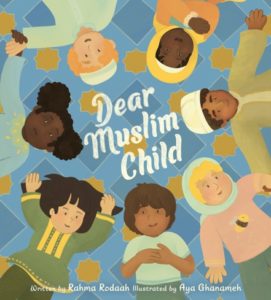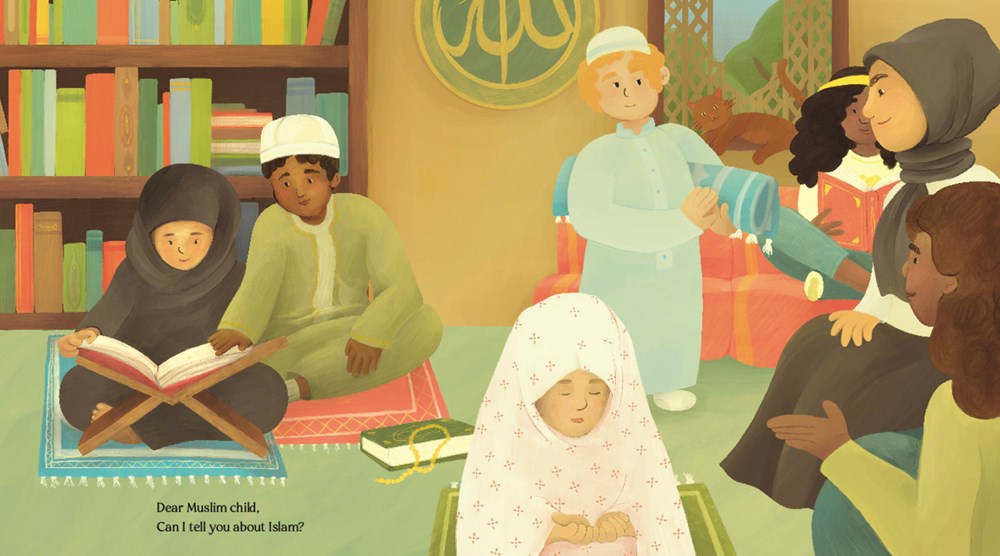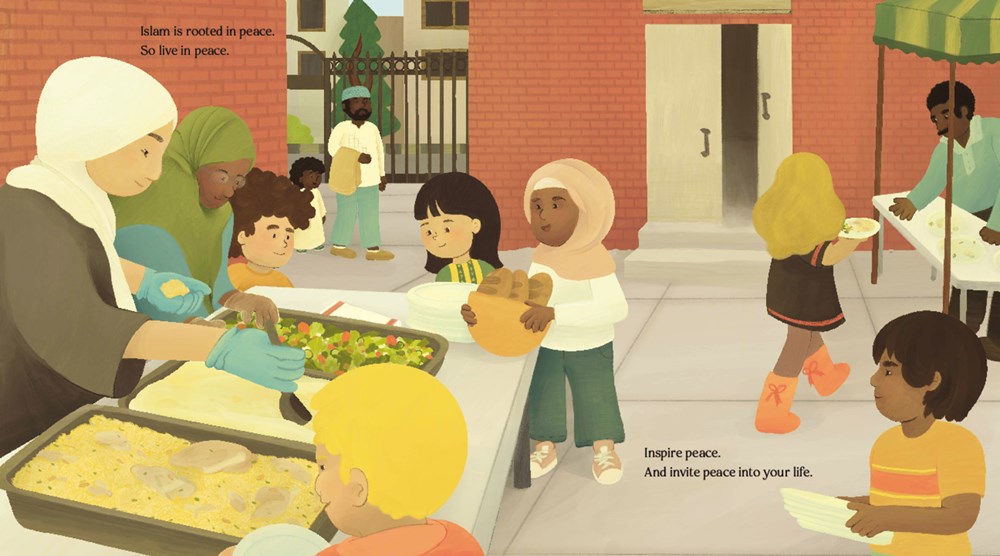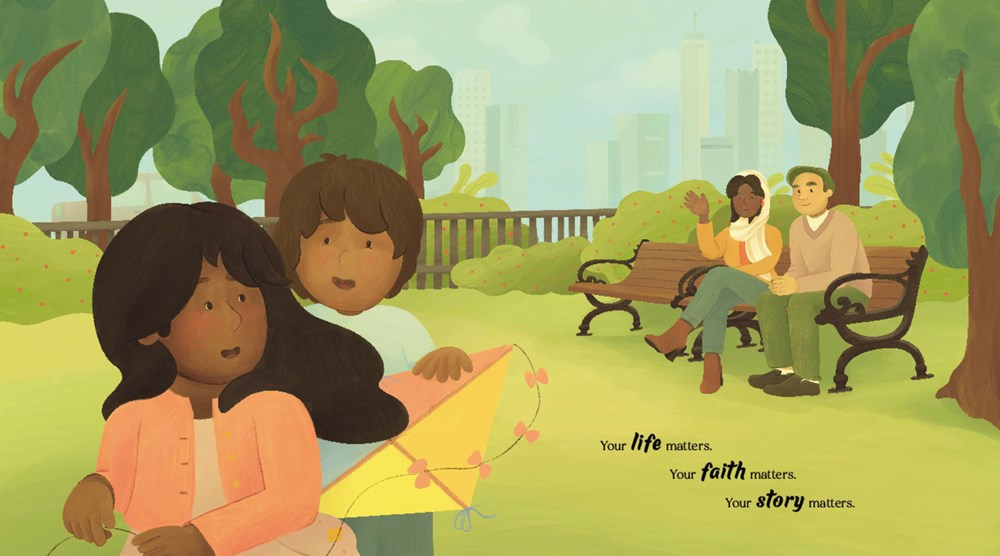“The Importance of Muslim Characters in Children’s Books: Fostering Inclusivity and Combating Misconceptions”
When I was seven, my family left my home country and arrived in Canada. I was the only African and Muslim in my class. I was bullied a lot for being different. Because I couldn’t speak French or English, I learned to read very late compared to other children. Picture books were where I started to learn my first words. But before the words came to me, the images were all I had, and to this day, I remember how none of the pictures ever looked like me or my family. I then understood why I was being bullied; no picture book explained who I was.
Children’s literature is a powerful tool for shaping young minds, influencing perspectives, and fostering a sense of identity. In an increasingly diverse world, literature must reflect this diversity, allowing children to see themselves represented in the stories they read. This is particularly crucial for Muslim children, who often find themselves underrepresented in children’s literature. As Islamophobia continues to rise, the inclusion of Muslim characters in books not only helps Muslim children feel a sense of belonging but also plays a vital role in dismantling stereotypes and fostering understanding among all children.
I cannot overstate the power of representation in children’s literature. When children see characters who look like them, share their experiences, and come from similar backgrounds, it fosters a sense of validation and belonging. For Muslim children, whose identities are often shaped by their faith and cultural background, seeing characters who share their religious beliefs and cultural practices in the books they read becomes an affirming experience. This is one of the reasons why I wrote Dear Muslim Child: I wanted to affirm, celebrate, and normalize the identity of Muslim children.
Representation in literature helps children develop empathy and understanding for those who may be different from them. Exposure to diverse characters broadens their perspectives, cultivating an appreciation for the richness of the world’s cultures. It was important for me to write a book that gives a behind-the-scenes look at the struggles Muslim children deal with due to being misunderstood.
The rise of Islamophobia in recent years has highlighted the urgent need for positive and accurate portrayals of Muslims in all forms of media, including children’s literature. As a woman who veils, I am more hyper-vigilant whenever I am in unfamiliar environments because I fear being attacked. Negative stereotypes and misrepresentations contribute to the perpetuation of harmful biases, leading to discrimination and prejudice. It might seem like a small act, but I think the publishing of proud Muslim characters in children’s books serves as a powerful antidote to these stereotypes, fostering a more nuanced understanding of Islam and Muslim communities.
By offering authentic portrayals of Muslim characters with diverse backgrounds, experiences, and interests, children’s literature becomes a tool for dismantling the monolithic image often associated with Islam. It allows young readers to see Muslims as individuals with unique personalities, dreams, and aspirations rather than reducing them to one-dimensional stereotypes.
Children are naturally curious and open-minded, making them receptive to learning about different cultures and religions. Including Muslim characters in children’s books provides an opportunity to teach young readers about the values, traditions, and practices of Islam in a relatable and accessible manner. This exposure fosters a sense of familiarity, reducing the fear of the unknown and promoting cultural understanding. Moreover, it helps dispel the notion that Muslims are fundamentally different or incompatible with the societies in which they live. As children engage with Muslim characters in stories, they begin to realize the commonality of human experiences, building bridges of understanding that transcend religious and cultural differences.
Imagine reading hundreds of books and never seeing your name, your culture or the celebrations that are so important to you. Fortunately, most of us cannot relate to this experience, but for a lot of us, this is the norm. Children’s literature should be a mirror that reflects the diversity of the world and a window that opens up new perspectives. The absence of Muslim characters in books can inadvertently send a message to Muslim children that their stories are not important or worthy of being told. Inclusion is not only about representation but also about acknowledging the validity of diverse experiences. When Muslim characters are woven into the fabric of children’s literature, it sends a powerful message of inclusivity, telling young readers that their identities are valued and that their stories matter.
Including Muslim characters in children’s books is not only a matter of representation but a crucial step toward fostering understanding, combating stereotypes, and promoting inclusivity. Dear Muslim Child and other picture books are a love letter to Muslim children and a warm invitation to others to witness the joy and love of this community.
Published February 6th, 2024 by Balzer + Bray
About the Book: This inspirational picture book from the author of Dear Black Child encourages Muslim children to take joy and pride in their Islamic faith. Perfect for fans of In My Mosque and The Proudest Blue.
Dear Muslim Child, your story matters.
In this lyrical ode to Islam, Muslim children all over the world are encouraged to celebrate their faith and traditions.
From DEAR MUSLIM CHILD by Rahma Rodaah, illustrated by Aya Ghanameh. All rights reserved. Used by permission of HarperCollins/Balzer + Bray.
About the Author: Rahma Rodaah was born and raised in Hargeisa, Somaliland. At the age of eight, her family immigrated to Canada, where she still resides today. She is a mother of four children and enjoys reading and coming up with silly bedtime stories. She is also the author of Dear Black Child and two self-published picture books. You can visit her online at rahmarodaah.com.
About the Illustrator: Aya Ghanameh is a Palestinian illustrator, writer, and designer from Amman, Jordan. She received her BFA in Illustration from the Rhode Island School of Design with a concentration in Literary Arts, and completed a year-long Children’s Books & Gifts Design Fellowship at Chronicle Books. You can visit her online at ayaghanameh.com.
Thank you, Rahma, for this reminder of the importance of mirrors (Sims-Bishop) in books for all ages!





